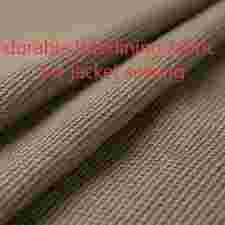Interlining-Factory Material Systems For Sustainable Apparel Manufacturing

In modern garment design the unseen layer that provides shape and stability is indispensable, and the role of Interlining often determines final fit and finish; selecting the appropriate Interlining at the prototype stage prevents puckering, improves drape, and streamlines production. This article examines material choices, bonding methods, testing protocols, production workflows, and sustainability approaches that help manufacturers deliver consistent, high-quality apparel.
1. Material Choices and Construction Methods
Support layers come in woven, knitted, and non-woven constructions, each offering distinct mechanical properties. Woven substrates deliver dimensional stability and crisp form for tailored pieces, knitted constructions provide elasticity and recovery suitable for active garments, and non-wovens offer consistent thickness and cost-efficiency for mass-produced items. Bonding approaches—hot-melt adhesives, thermal lamination, needle-punching, and stitch-through techniques—affect seam performance and laundering behavior. Selecting the right base and bonding chemistry minimizes delamination and preserves fabric hand.
2. Balancing Hand, Drape, and Function
A garment’s tactile impression is as important as its silhouette. Achieving balance requires measuring bending stiffness, thickness uniformity, and compressibility to ensure panels lie flat and edges finish cleanly. Wearer trials are essential because instrument readings don’t always predict perceived comfort. Iterative prototyping—trying several support weights and adjusting pattern lines—lets designers tune garment behavior until both appearance and comfort are optimized.
3. Testing, Certification, and Quality Assurance
Long-term performance hinges on adhesive stability, dimensional tolerances, and thermal resistance under pressing. Standard tests include peel strength, cyclic wash tests, and thermal aging simulations. Inline quality controls—thickness gauging, bond-coverage imaging, and batch traceability—catch deviations before full production runs. Suppliers that provide comprehensive test data and small validation samples help brands reduce risk and speed approvals when moving from proto to production.
4. Integration into Production Workflows
Early specification of support-layer requirements in tech packs prevents last-minute substitutions that can cause assembly issues. Pre-kitted components, registered laminates, and graded support strategies reduce line changeovers. Training press operators on temperature profiles and dwell times ensures consistent bonding. Documented pressing windows and conveyor settings prevent process drift; labeling pattern pieces with specific reinforcement codes streamlines assembly and cuts rejects.
5. Sustainability and Lifecycle Strategies
Environmental considerations increasingly influence material choices. Recycled fiber backings, water-based adhesives, and reduced-energy bonding processes lower environmental impact while preserving performance. Lifecycle assessments compare initial performance with end-of-life impacts; increasing recycled content modestly often yields significant footprint reductions at scale. Designing for disassembly and selecting materials compatible with recycling systems also improve circularity and brand sustainability credentials.
6. Supplier Selection and Supply-Chain Resilience
Price alone should not guide sourcing. Evaluate potential partners for consistent batch quality, production capacity, and transparency of test data. Joint development programs that bring designers, sourcing, and supplier engineers together reduce surprises during scale-up. Maintain a qualified second-source list and keep critical technical parameters in contracts to mitigate shortages. Clear communication about acceptable tolerances for thickness, adhesion, and thermal processing reduces downstream rework.
7. Practical Guidance for Specifiers and Designers
Start with a clear functional brief—shape retention, insulation, reinforcement, or opacity—and test candidate laminates with actual face fabrics under representative care cycles. Require batch test reports and define acceptable tolerance bands for thickness and adhesion. Use graded stabilization in complex patterns to distribute support where needed, and document pressing parameters so production teams can reproduce trial results reliably.
Thoughtful selection and integration of support layers elevate garment fit, durability, and perceived quality while reducing returns and production headaches. By combining careful material selection, thorough testing, and early collaboration across design and manufacturing, teams convert this often-overlooked component into a decisive advantage. For technical references and detailed application guidance, visit https://www.interlining-factory.com/news/what-is-interlining-types-applications-and-more.html
- Art
- Causes
- Crafts
- Dance
- Drinks
- Film
- Fitness
- Food
- Juegos
- Gardening
- Health
- Home
- Literature
- Music
- Networking
- Other
- Party
- Religion
- Shopping
- Sports
- Theater
- Wellness



